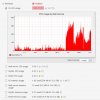-
If you are still using CentOS 7.9, it's time to convert to Alma 8 with the free centos2alma tool by Plesk or Plesk Migrator. Please let us know your experiences or concerns in this thread:
CentOS2Alma discussion
You are using an out of date browser. It may not display this or other websites correctly.
You should upgrade or use an alternative browser.
You should upgrade or use an alternative browser.
Health Monitoring IIS CPU
- Thread starter Jonas N
- Start date
The WWW service monitors the health of worker processes by periodically pinging them to determine their responsiveness. If a worker process fails to respond to a ping (for example, the worker process might not have available threads to process the incoming request), the WWW service either terminates the worker process and creates another worker process to replace it, or releases the worker process but lets it continue to run. You can configure IIS to perform a specified action when an unhealthy worker process is released — for example, you can specify that IIS attach a debugger to a released worker process.
Additionally, the WWW service maintains a communication channel to each worker process and can detect a drop in the communication channel, which indicates a worker process failure. When a worker process fails of its own accord, the WWW service starts another worker process in its place, provided the application pool does not go into rapid-fail protection.
Additionally, the WWW service maintains a communication channel to each worker process and can detect a drop in the communication channel, which indicates a worker process failure. When a worker process fails of its own accord, the WWW service starts another worker process in its place, provided the application pool does not go into rapid-fail protection.
The WWW service monitors the health of worker processes by periodically pinging them to determine their responsiveness. If a worker process fails to respond to a ping (for example, the worker process might not have available threads to process the incoming request), the WWW service either terminates the worker process and creates another worker process to replace it, or releases the worker process but lets it continue to run. You can configure IIS to perform a specified action when an unhealthy worker process is released — for example, you can specify that IIS attach a debugger to a released worker process.
Additionally, the WWW service maintains a communication channel to each worker process and can detect a drop in the communication channel, which indicates a worker process failure. When a worker process fails of its own accord, the WWW service starts another worker process in its place, provided the application pool does not go into rapid-fail protection.
Additionally, the WWW service maintains a communication channel to each worker process and can detect a drop in the communication channel, which indicates a worker process failure. When a worker process fails of its own accord, the WWW service starts another worker process in its place, provided the application pool does not go into rapid-fail protection.
The WWW service monitors the health of worker processes by periodically pinging them to determine their responsiveness. If a worker process fails to respond to a ping (for example, the worker process might not have available threads to process the incoming request), the WWW service either terminates the worker process and creates another worker process to replace it, or releases the worker process but lets it continue to run. You can configure IIS to perform a specified action when an unhealthy worker process is released — for example, you can specify that IIS attach a debugger to a released worker process.
Additionally, the WWW service maintains a communication channel to each worker process and can detect a drop in the communication channel, which indicates a worker process failure. When a worker process fails of its own accord, the WWW service starts another worker process in its place, provided the application pool does not go into rapid-fail protection.
Hmmm oki, what would be the best way, we have only moved about 28 client and allready have this problem...
How to solve it?
Best regards
Jonas
HMoellendorf87
Regular Pleskian
It all depends on your hardware and so on... Is it a VM?
HMoellendorf87
Regular Pleskian
What does your task manager says?
You can also check the perfmon tool to get more information on these events. Alternatively, check the event manager too for any errors or warning that IIS may have given related to any application pool having to use more resources or something similar such events.
What does these 2 show?
What does these 2 show?
Similar threads
- Replies
- 21
- Views
- 1K
- Replies
- 1
- Views
- 851
- Replies
- 13
- Views
- 958





